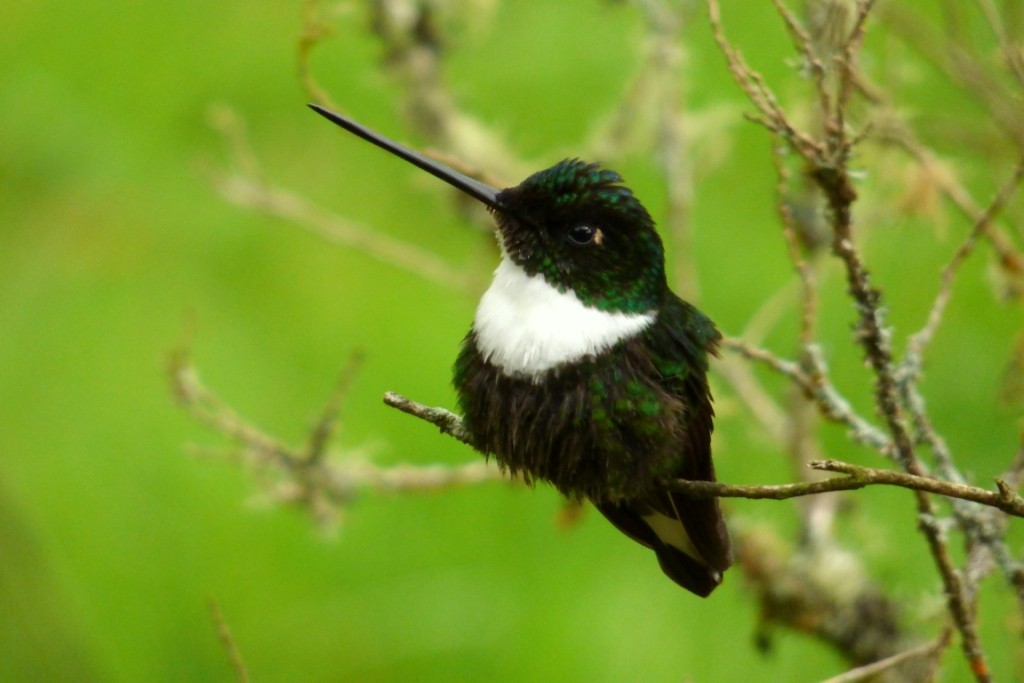Collared Inca
A species of Incas and starfrontlets Scientific name : Coeligena torquata Genus : Incas and starfrontlets
Collared Inca, A species of Incas and starfrontlets
Botanical name: Coeligena torquata
Genus: Incas and starfrontlets
Content
Description General Info
 Photo By Alejandro Bayer Tamayo , used under CC-BY-SA-2.0 /Cropped and compressed from original
Photo By Alejandro Bayer Tamayo , used under CC-BY-SA-2.0 /Cropped and compressed from original Description
10–14 centimetres (3.9–5.5 in) in length, with a rather long (3–3.5 centimetres (1.2–1.4 in)), straight, black beak. Under most lighting conditions Coeligena torquata torquata appears black except for a very large and distinctive white chest-patch. However, in ideal lighting other features can be discerned: a shimmering metallic violet forehead patch in males, white thighs, fleshy-dusky feet, shimmering green throat in males, dull and containing some white in females, and some dark green mixed in with the black of the body. The tail of both genders is black except for white on the basal half of the outer four rectrices, and part of the underside. The female is slightly lighter green overall than the male and has a slightly smaller chest-patch Vocalizations are infrequent. Quiet, low-pitched, reedy whistle "tu-tee." Longer series of "pip... pip..." Very quiet spitting sound when foraging. 
Size
14 cm
Nest Placement
Tree
Feeding Habits
The collared Inca is mainly nectarivorous, sipping nectar from flowers, and consumes insects for protein. Exhibiting solitary trap-lining behavior, it feeds on a regular route of flowers, favoring epiphytes, fulfilling pollination roles while foraging alone.
Habitat
The collared Inca occupies humid montane cloud forests within subtropical and temperate zones along the Andean slopes, primarily ranging from 1,800 to 3,000 meters in altitude. It favors the understory to lower canopy, especially near thickets at the forest edge and may extend into adjacent sub-páramo habitats. Its habitat range is extensive, with elevational variations typically dictating where it coexists with related species.
Dite type
Nectivorous
General Info
Feeding Habits
Bird food type
Distribution Area
Humid subtropical and temperate forest regions, including cloud forests on both slopes of the Andes from Venezuela to Bolivia between 1,800 metres (5,900 ft) and 3,000 metres (9,800 ft), usually above 2,100 metres (6,900 ft) in Ecuador. It typically forages below half the height of the canopy, and can most often be found around thickets near the forest edge. It is fairly common throughout most of its range. No reasons for concern have been claimed. 
Species Status
Not globally threatened.
Scientific Classification
Phylum
Chordates Class
Birds Order
Swifts and hummingbirds Family
Hummingbirds Genus
Incas and starfrontlets Species
Collared Inca